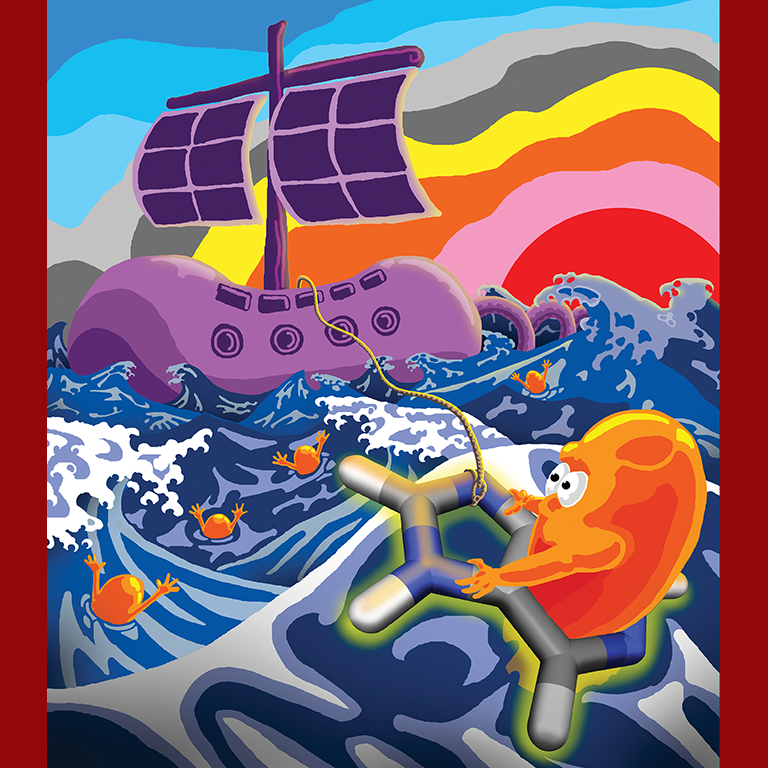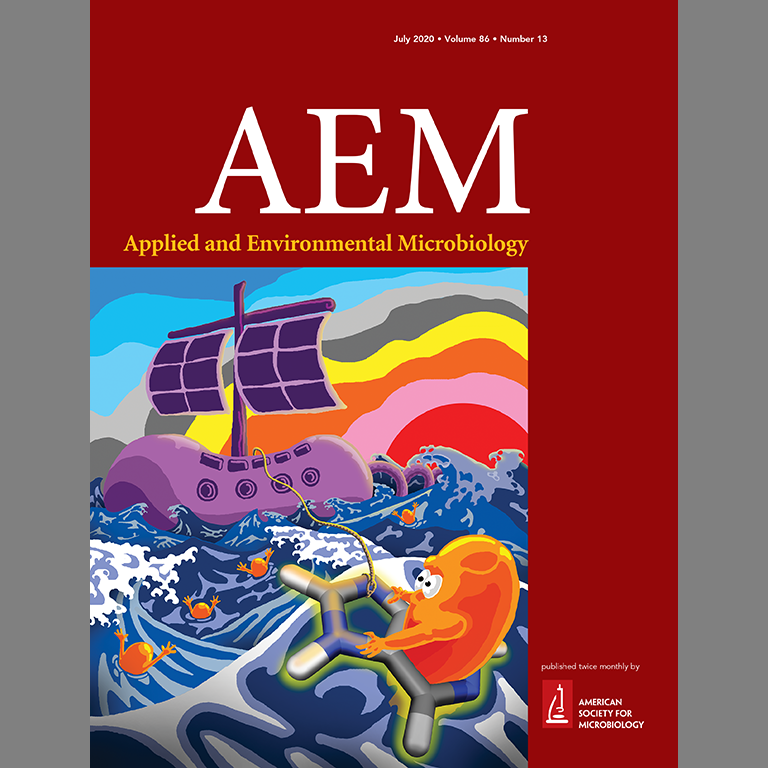The artwork of an Indiana University biologist was selected as the cover image of the July 2020 issue of the American Society for Microbiology's Applied and Environmental Microbiology journal.
Jake McKinlay, an associate professor in the IU College of Arts and Sciences Department of Biology, helps his students—and now others—understand microbial physiology through the colorful artwork he creates.
"We had previously engineered a cooperative partnership between two bacteria, Escherichia coli and Rhodopseudomonas palustris. By our own design, the mutualism is based on the bidirectional exchange of essential carbon and nitrogen in the form of organic acids and ammonium," says McKinlay, "Thus, when we applied a genome-wide screen to identify genes important for mutualistic growth, were surprised to discover additional purine nucleotide cross-feeding from R. palustris to E. coli. E. coli mutants that could not synthesize purines, called purine auxotrophs, survived in the presence of R. palustris, but not when R. palustris was absent."
McKinlay's graphic on the AEM journal cover is an analogy for the discovery of unexpected purine cross-feeding from R. palustris to E. coli through transposon sequencing in a mutualistic coculture, as captioned in AEM, "Among a library of E. coli transposon mutants, struggling to stay afloat in a tumultuous sea, an E. coli purine auxotroph is rescued by a purine life ring excreted by the solar-powered vessel, R. palustris."



 The College of Arts
The College of Arts